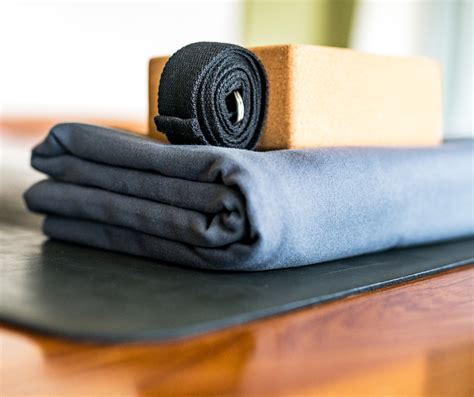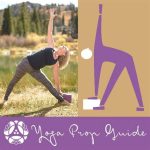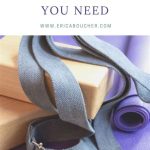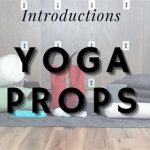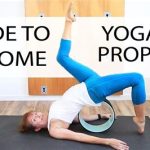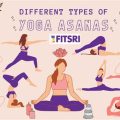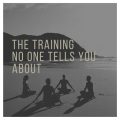Essential Props for Beginner Yogis: A Comprehensive Guide for Starting Your Yoga Journey
Yoga, an ancient practice, has been transforming lives for millennia. For beginners, starting yoga can feel both exciting and overwhelming. One aspect that makes the journey smoother is having the right yoga props. These props not only enhance comfort but also improve alignment, provide stability, and help practitioners get the most out of their sessions. In this guide, we’ll explore essential props that every beginner yogi should consider, along with practical insights on their usage.
Introduction: The Role of Props in Yoga Practice
Props in yoga serve a multitude of purposes, from increasing flexibility and improving posture to helping with balance and alignment. For beginners, props make yoga accessible by compensating for physical limitations and promoting proper form. In this guide, we will break down the most critical props, explain their uses, and provide actionable tips to incorporate them into your practice effectively.
Key Concepts in Using Yoga Props
Before we delve into specific props, it’s important to understand a few key concepts:
- Support and Stability: Yoga props help beginners gain confidence by providing a firm foundation.
- Adaptation: Props allow for the modification of poses to suit individual flexibility and strength levels.
- Alignment: Proper alignment is crucial to avoid injuries and gain the full benefits of yoga. Props assist in maintaining this alignment.
- Restorative Benefits: Certain props, such as bolsters and blankets, aid in deep relaxation, an integral part of many yoga practices.
Historical Context: The Evolution of Yoga Props
Yoga props, though a relatively modern addition to the practice, have roots in traditional yoga’s adaptability and inclusivity. Pioneered by B.K.S. Iyengar in the mid-20th century, the use of props aimed to make yoga accessible to people of all ages and abilities. Iyengar believed that props could help maintain the integrity of asanas (poses) while allowing students to practice safely. Over time, props like blocks, straps, and blankets have become staples in studios worldwide.
Current State Analysis: Yoga Props in Today’s Practice
Today, yoga props are widely embraced by practitioners of all skill levels. As yoga continues to evolve, instructors emphasize the importance of using props to support both beginners and seasoned yogis. Popular types of props, such as blocks, straps, and bolsters, are now integral to yoga classes and individual home practices. Many online yoga programs for beginners also highlight the role of props to ensure safe and effective practice.
Practical Applications of Yoga Props for Beginners
Let’s explore the most common yoga props and how to use them effectively:
1. Yoga Blocks
Purpose: Blocks are versatile tools that help with balance, alignment, and posture. They are often used in standing poses to “bring the floor closer” for those who struggle with flexibility.
How to Use: Place blocks under your hands in poses like Trikonasana (Triangle Pose) or under your hips in seated poses to maintain a neutral spine.
2. Yoga Straps
Purpose: Straps help increase flexibility and improve alignment, especially in poses that involve hamstring or shoulder stretches.
How to Use: In Supta Padangusthasana (Reclining Hand-to-Big-Toe Pose), loop the strap around your foot to extend your leg comfortably without straining.
3. Yoga Bolsters
Purpose: Bolsters are ideal for restorative poses and provide support in seated or reclined positions, making them perfect for relaxation and meditation.
How to Use: Place a bolster under your knees in Savasana (Corpse Pose) to alleviate lower back tension, or use it under your chest in a supported forward bend.
4. Yoga Blankets
Purpose: Blankets offer extra cushioning and support in seated postures, as well as in more restorative poses.
How to Use: Fold a blanket to sit on during seated postures like Sukhasana (Easy Pose) to elevate your hips, allowing better spinal alignment.
5. Yoga Wheel
Purpose: A more recent addition to the yoga world, the yoga wheel helps open up the back, chest, and shoulders. It’s also used to deepen stretches and aid balance.
How to Use: In backbends like Urdhva Dhanurasana (Wheel Pose), place the yoga wheel under your spine to enhance the stretch and support your lower back.
6. Meditation Cushions
Purpose: These cushions, also known as zafus, are used to provide comfort during meditation sessions.
How to Use: Use a cushion under your pelvis to raise your hips above your knees in meditation, encouraging a tall, comfortable spine.
Case Studies: How Yoga Props Helped Beginners Progress
| Yogi | Challenge | Prop Used | Result |
|---|---|---|---|
| Anna | Struggled with tight hamstrings | Yoga strap | Improved flexibility in forward bends |
| Ben | Lower back pain in seated poses | Yoga bolster | Reduced discomfort and improved posture |
| Cara | Difficulty balancing in standing poses | Yoga block | Enhanced balance and stability |
| Daniel | Strained shoulders in Downward Dog | Yoga strap | Relieved shoulder tension and improved form |
| Ella | Inflexibility in backbends | Yoga wheel | Deepened backbend and improved flexibility |
Stakeholder Analysis: Who Benefits from Yoga Props?
The stakeholders in the yoga community range from individual practitioners to yoga instructors and the broader wellness industry. Here’s how they each benefit from the use of props:
- Beginner Yogis: Gain confidence, avoid injury, and improve flexibility.
- Yoga Instructors: Props help teachers ensure that students practice safely and effectively.
- Yoga Studios: Offering props enhances the inclusivity and accessibility of classes, attracting a wider audience.
- Wellness Brands: As the demand for yoga props increases, companies can innovate and expand their offerings.
Implementation Guidelines for Incorporating Yoga Props
To effectively incorporate props into your practice, follow these guidelines:
- Start Simple: Begin with one or two props that address your specific needs. For example, if you struggle with flexibility, a block and a strap are great starting points.
- Understand Your Limits: Don’t push your body beyond its current abilities. Use props to support your progress without overextending yourself.
- Consistency is Key: Regular use of props will gradually improve your flexibility, balance, and posture.
- Seek Guidance: If possible, work with a qualified instructor to learn how to use props effectively and safely.
Ethical Considerations in Yoga Practice with Props
The use of props raises important ethical questions related to inclusivity, accessibility, and commercialization in yoga:
- Inclusivity: Props make yoga accessible to individuals with varying physical abilities, promoting inclusivity.
- Commercialization: The rise of expensive, branded yoga props can make yoga feel exclusive, contradicting the philosophy of accessibility for all.
- Over-Reliance: There is a balance between using props to aid practice and becoming dependent on them, which could hinder progress in the long term.
Limitations and Future Research in Yoga Props Usage
While yoga props are beneficial, they have limitations. Over-reliance on props can prevent practitioners from challenging themselves and achieving more advanced postures. Additionally, the quality and affordability of props vary widely, and more research is needed to explore how different materials and designs impact their effectiveness. Future studies could also investigate the long-term effects of using props on posture correction, flexibility, and injury prevention.
Expert Commentary on the Importance of Props for Beginner Yogis
As yoga continues to grow in popularity, the role of props has become central to making the practice accessible and safe for everyone. Props allow beginner yogis to ease into postures without risking injury and provide seasoned practitioners with opportunities to deepen their practice. For those starting their yoga journey, props are not just optional accessories—they are essential tools that offer support, enhance alignment, and foster greater awareness in each pose.
